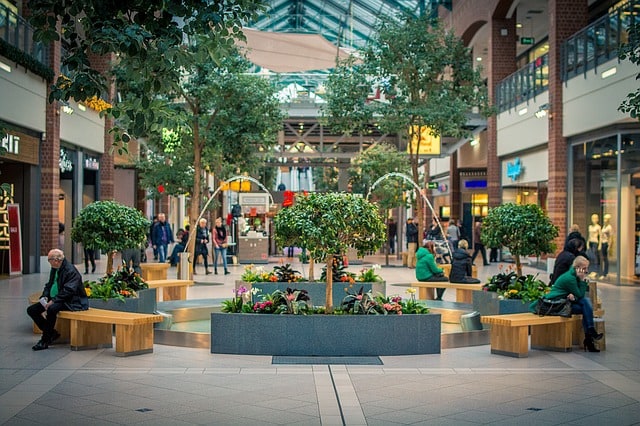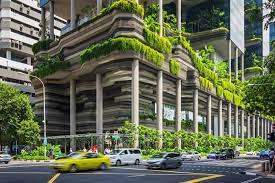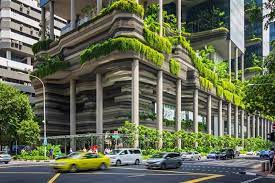COURTESY : www.conserve-energy-future.com
Green arhitecture
The materials used in green architecture are those that encourage good thermal performance, energy efficiency, water efficiency, resource management and save general construction costs. The materials long-term effects on the environment are a key criterion for selection. The following list provides a guide to the types of materials which are suitable for green building. The best materials are those which combine several of these features; materials like Accoya modified wood. This is sustainable, durable, manufacture is resource efficient, it is made from renewable material and it is non-toxic. Materials like these are the mainstay of the most ecological builds and their use helps towards obtaining certification such as GGBC.
1. Recycled products
Recycled content products are used in green architecture on account of their resource efficiency. Examples of recycled products include paper insulation from recycled newspapers and cardboards, cotton insulation from recycled denim, recycled stone and recycled steel. They are effective because they use fewer chemicals and energy to process and also require fewer virgin resources.
2. Materials manufactured with resource efficient processes
These materials are preferred in green construction because they not only require less energy to produce but also minimize resource wastage and greenhouse gas emissions. An example is sustainable concrete made from crushed glass and wood chips or slag.
3. Natural, abundant or renewable materials
These materials can be obtained from sustainably managed and naturally occurring sources. They must also be renewable and adequately abundant in nature. Examples are certified wood and solar tiles.
See also ’10’ Powerful Reasons Why Palm Oil is Bad for the Environment
4. Refurbished, salvaged or remanufactured
As the name suggests, these are the materials that are refurbished, salvaged or remanufactured. Their essentiality includes their inherent capacity to create value and saving materials from disposal or generating landfill waste. The materials are renovated, repaired or improved in performance, functionality or quality. Examples include plastic ceilings.
5. Reusable and recyclable materials
These are the materials that were previously used, but are still in good condition and can be used in new construction. Examples include old plumbing and old doors.
6. Durable materials
Materials that last longer are more environmentally friendly because they eliminate the need for frequent replacements and maintenance. They also reduce the overall costs of dependence of new upgrades in an already constructed building or house. Besides, durable materials have high reusable and recyclable value.
7. Locally available
The use of locally available materials is also part of green architecture since it minimizes transportation costs, greenhouse gas emission during transportation, and the interference with the local ecology.
8. Non-toxic materials
Non-toxic materials are highly recommended in green architecture. They promote IAQ and they are substantially low in carcinogen elements, irritants or reproductive toxicants.
9. Moisture resistant products
Moisture resistant materials are the ones that hinder the growth of biological contaminants in buildings. They are 100% moisture resistant and thus highly preferred in green architecture in terms of improving IAQ.
10. Low VOC products
Products with low VOCs are a greatly desired in green architecture designs. They improve IAQ since they are non-toxic and less hazardous to the occupant’s health.
11. Water and energy conserving materials
Water conserving materials help in reducing the overall water requirements during construction and also in the lifecycle of the building or house. The materials are designed to reduce water wastage and enhance water quality in the landscape areas and within the building. Energy conserving materials, on the other hand, capitalize on scaling down energy costs and improving energy efficiency of the buildings. Examples of energy efficient materials are solar tiles and smart insulators.

Principles of Green Architecture
As the world migrates towards a more sustainable future, architects are confronted with an important goal of design models that lessen the negative impacts on our environment due to construction. To make this a reality, the designs are guided by the principles of green architecture. Here are the principles.
- Energy efficiency
The principles of green architecture incorporate various measures that encourage energy efficiency. It is done through designs that cut down energy consumption including the energy requirements for energy use and the exploitation of alternative and sustainable energy sources such as wind and solar. For instance, green architecture takes care of natural air flow patterns and natural lighting to reduce the needs for heating, ventilating, and air conditioning; and artificial daytime lighting respectively. The designs simply insist on reducing the lifetime costs of heating, lighting, air condition and other electric power usage requirements.
- Water efficiency
Green architecture works with the inspiration of ecological surrounding to protect water quality and reduce water consumption or wastage. It is part of the sustainable principles in green construction which encourage the efficient use of water. This green architecture principle makes certain that water is harvested, used, purified and re-used during the entire construction period. At the same time, the architectural design ensures that in the entire life cycle of the building not only supports efficient water use but also preserves the quality of surrounding water systems and makes use of water recycling mechanisms.
- Land use efficiency
Land use efficiency pertains to architectural designs that encourage suitable site development in terms of preservation of the surrounding environment and reuse of existing local materials. It advocates for the incorporation of roof gardens, earth shelters and extensive landscaping around and throughout the building.
- Low environmental impact and conservation of natural characteristics
Construction projects are proven to be responsible for more than 50% of environmental impacts and the destruction of natural systems. Construction projects also contribute to about 10% of the total global emissions every year. One of the principles of green architecture is to therefore use green designs to lessen these environmental impacts. Particularly, this green principle is all about preventing degradation of the site during construction, sprawl management, and the controlled use of resources as well as ensuring energy-efficient buildings lessen the overall impacts on the environment. The design aids in the conservation of natural resources, improved water and air quality, and the protection of ecosystems and biodiversity.
- Material efficiency
The proper management and use of materials in construction is also another huge concern. Proper construction techniques have to be employed and this is where green architecture comes in. As such, material efficiency is one of the green architecture principles as it creates designs that inspire sustainable construction by optimizing the construction operations. Material efficiency as a green architectural principle sees to it that the lifetime of the building enhances efficiency in terms of maintenance and operations. Energy efficiency and resource conservation are the aspects incorporated in the designs to guarantee overall material efficiency.
- Low maintenance costs
As stated earlier, the operational and construction costs associated with the conventional construction mechanisms prove quite high and are equally material demanding. Green architectural design facilitates the use of materials and construction techniques that help in cutting back the operational and construction costs by more than half, all attributed to their cost-effectiveness. This green architecture principle necessitates the need of using renewable plant products, recycled metal and recycled stone among other non-toxic products. Renewable and reusable products ensure high performance while at the same time reducing the long-term maintenance costs.
- Waste reduction
Green architecture advances the demand for reducing the wastage of water, energy, and materials during and even after construction. On this basis, the green architectural design offer easier ways of reducing the amount of consumer product wastage generated by the building occupants through the integration of on-site solutions like compost bins and eco-friendly waste management system. The design also takes care of water recycling and energy saving approaches in construction to reduce water and energy wastage respectively.
- Use of renewable energy
Among the green architecture principles is the use of renewable energy. This principle ideally works to make renewable energy part of the architectural design or a highly recommended feature. The use of wind power, solar energy and biogas are examples of renewable energy technologies which are often included in the green architecture designs. The architects are keen at tailoring the designs based on the geographical locations to take full advantage of the available renewable energy. For instance, green oriented architects design buildings to fully utilize the seasonal changes in the sun’s position and other regional renewable energy sources such as wind and biomass.
- Indoor environmental quality
Indoor environmental quality is also part of the green architecture principles. The designing of a house or commercial building based on the green principles involves the features of comfortable interior space with an emphasis on natural temperature control, proper ventilation and the use of products that do not give off toxic compounds or gases. The purpose of the principle is to assure the quality of indoor environments.




